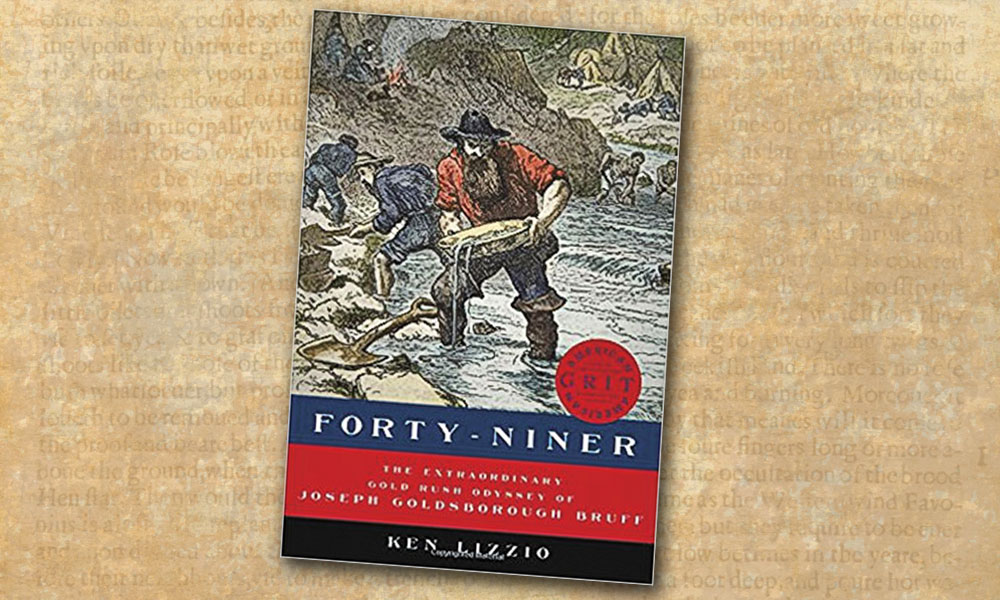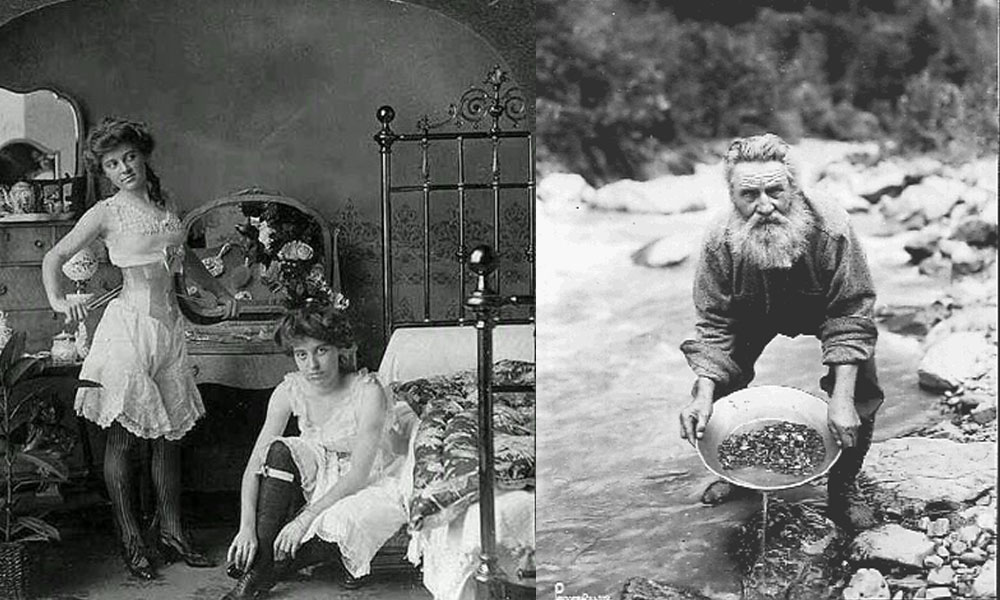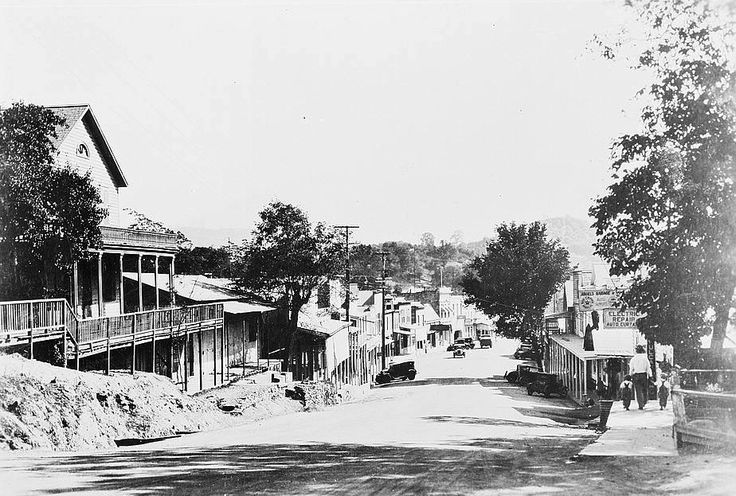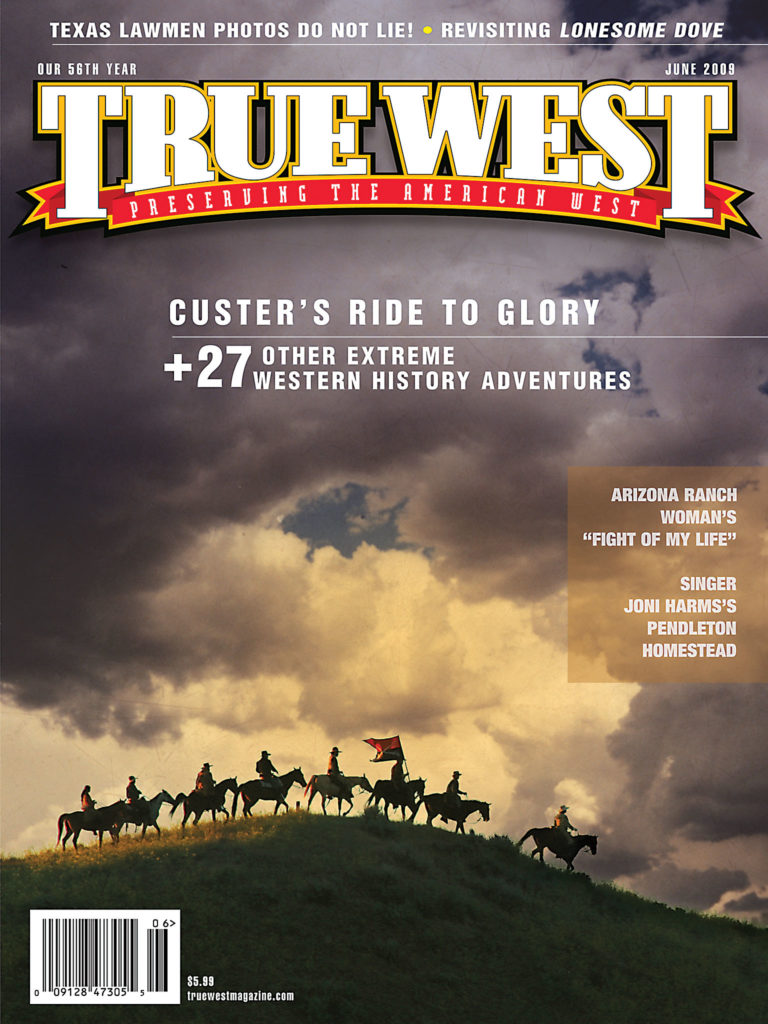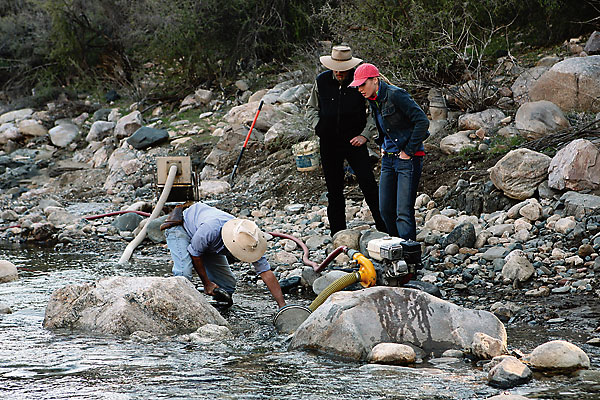 In the Bradshaw Mountains outside of Phoenix, Arizona, I saddled up with my guide Milton Joseph and two other riders to search for gold with Windwalker Expedition.
In the Bradshaw Mountains outside of Phoenix, Arizona, I saddled up with my guide Milton Joseph and two other riders to search for gold with Windwalker Expedition.
Joseph is an English endurance rider whose horses are well trained and forward going. The ride can be what you make of it. We stuck to the walk-and-trot in order to enjoy the views of the mountains covered with saguaro, cat’s claw, prickly pear, hedgehog cactus, jumping cholla and ocotillo.
Be careful when searching for gold in this area. The sheer number of cacti and abandoned mines can be avoidable hazards by staying on designated trails.
We passed some small wild burros, descendants of those abandoned when the gold petered out in the late 1800’s. Burros were used as pack animals to haul supplies, like ore, to mill sites or mining areas. Today they roam the mountains in small packs.
When we descended down a steeper route to Humbug Creek, Joseph pointed out evidence of area mining, a pile of sand and rocks by the creek. People are still prospecting here.
Our destination was Humbug, one of more than 40 ghost towns in the Bradshaw Mountains. Humbug’s sole resident David Burns has been searching for gold at this mining site for more than 25 years. David walked with me around some of the abandoned buildings, which he told me date back to the 1920s. At its peak, around 200 people lived in Humbug. Miners from Humbug used to walk 20 miles uphill to Crown King to drink inside its saloon. Those miners had to be dedicated to make that hike through the desert.
We walked to Humbug Creek, dubbed so when claims proved disappointing here in the 1860s; prospectors sang a different tune in the next decade with the discovery of solid placer deposits.
David had a suction dredge set up to vacuum the sand and gravel from the creek. We took to the sluice box next and managed to find some small shards of gold. I had gold fever the second I saw a shiny spec. David’s eye gleamed as he pulled a small tube filled with water and gold out of his pocket to show me his recent findings. I was impressed by the large amount of gold in his tube, and that was just from a few weekends of work. I, myself, still keep a small tube of gold that I found while searching in the Appalachian Mountains in Quebec. Gold panning can be addictive, especially if you just find a little, but you know that more gold is out there.
We didn’t find any big nuggets with David, so we got out of the sun and headed into a mine tunnel. We traveled up the mountain to El Paro Bonito, a mine that operated from 1882, when Charles Chompie discovered gold here, until 1934. The mine could have more gold, something David would like to find out, if the price of gold gets high enough.
As I stood by the mine, I reflected on the historic gold rush days and the possibilities of striking it big in the Bradshaws. The day had been a real adventure for me; from horses to wild burros, myriad cacti and other flora to gold and local legend and history. Gold fever can strike even the most unassuming participant.


